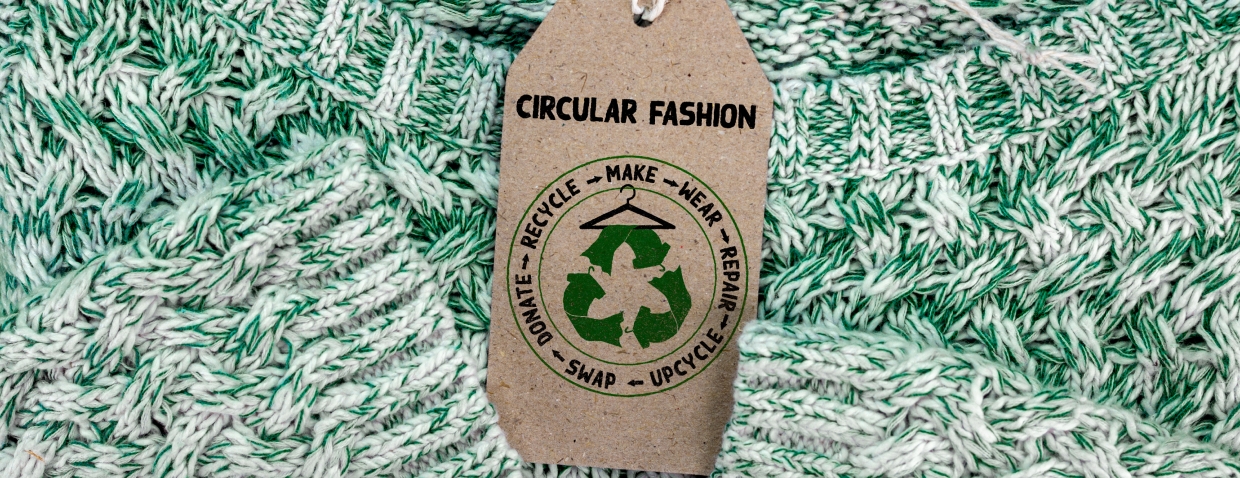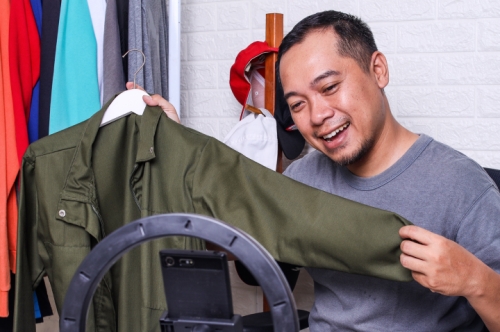The Ultimate Guide to Upcycling Your Old Clothes

In recent years, the fashion industry has been undergoing a critical transformation. As the impact of fast fashion weighs heavily on our environment, the need for sustainable fashion solutions becomes not just a trend, but a necessity. Enter the realm of Clothing Upcycling.
This ingenious method involves taking what you already own and transforming worn-out clothes into fresh, stylish pieces. Not only does it save those beloved garments from heading to the landfill, but it also gives them a new lease on life, reflecting both your unique style and commitment to a greener planet.
By actively participating in this movement, we're not only advocating for eco-friendliness but also recognizing the vital role that repurposing plays in today's fashion landscape. So, let’s get started on your journey to upcycling your clothes.
The Art and Benefits of Repurposing Old Clothes
What is repurposing in fashion and why is it important?
Repurposing, at its core, is all about giving a second (or third, or fourth) life to items that might otherwise be deemed as waste. In the context of fashion, this translates to taking old garments and creatively transforming them into something new and trendy. Instead of tossing that faded shirt or those slightly-too-big jeans into the trash, you give them a chance to shine again, often in an entirely different form.
Now, let's talk about why this is a big deal. From an environmental perspective, the fashion industry is one of the largest polluters globally. Mass production, rapid consumption, and frequent disposal of clothing contribute to enormous waste, carbon emissions, and water usage. By repurposing old clothes, we're actively reducing the demand for new garments, thereby cutting down on production and waste. Fewer clothes in the landfill mean a happier and healthier planet.
On a more personal note, repurposing clothes offers a unique blend of benefits. For starters, it's kind on your wallet. Think about it: revamping a dress you already own costs significantly less than buying a new one. Additionally, by taking the DIY route, you're adding a personal touch to your wardrobe, showcasing your creativity, and ensuring that your outfits are one-of-a-kind. And if that's not enough, there's also a sense of accomplishment and pride that comes with wearing something you've personally crafted.
Still need more convincing about the wonders of sustainable fashion practices? Dive deeper into its many facets and merits by checking out our detailed post on "The Benefits of Sustainable Fashion : A Guide to Making Eco-Friendly Fashion Choices." By understanding the full spectrum of sustainable fashion, you'll find repurposing old clothes isn't just a trend; it's a movement, and one we should all get behind.
DIY Clothing Upcycle: Getting Started
So you're pumped about the idea of transforming those closet veterans into stylish novelties? Awesome! Before you dive in, though, let's ensure you have all the basics covered. Upcycling, while rewarding, requires a bit of prep work and a dash of vision. Here's a roadmap to get you started.
Materials & Tools You'll Need
- Basic Sewing Kit: This includes needles, a variety of thread colors, pins, and perhaps even a sewing machine if you're looking to get serious.
- Fabric Dye: For those faded garments in need of a vibrant refresh.
- Fabric Scissors: Precision is key, especially when you're making adjustments to your clothing.
- Embellishments: Think buttons, beads, patches, and sequins to add that extra flair.
- Tailor's Chalk or Fabric Markers: Essential for marking alterations before you make the cut.
Skills to Master
- Sewing: Whether by hand or machine, this is your bread and butter. From mending holes to adjusting fits, sewing is the foundational skill for upcycling.
- Dyeing: A simple dye bath can transform that once white tee into a rainbow of possibilities. It's simpler than it sounds, and there are a plethora of tutorials out there to guide you.
- Embellishing: This is where your personal style truly shines. Adding a patch here or some beading there can elevate a basic item to a statement piece.
The Role of Creativity & Vision
Crafting is one thing, but imagining the end product is where the real magic happens. You might be looking at an oversized shirt, but with a bit of creativity, you can envision it as a trendy off-shoulder top or even a skirt. It's this foresight that guides your efforts and ensures that your finished product is not only wearable but also truly unique. Having a clear vision also minimizes waste, ensuring that each cut, dye, or embellishment adds value to the piece.
And there you have it! With the right tools in hand, some basic skills under your belt, and a sprinkle of imagination, you're all set to embark on your DIY Clothing Upcycle journey.
Some thought-started to get the juices flowing
Ah, the joy of seeing an old piece of clothing getting a fabulous makeover! Let's roll up our sleeves and get hands-on. Whether it's that T-shirt from a concert years ago or a pair of jeans that's seen better days, we've got the perfect upcycling solutions for you.
The T-Shirt Transformation
Into a Trendy Crop Top:
- Lay your T-shirt flat on a working surface.
- Decide the length of your crop top and mark it using tailor's chalk.
- Cut straight across, following the line.
- For a finished look, fold the cut edge under and stitch along the hem.
Optional: Add some embellishments or patches to give it an extra flair!
Into a Handy Bag:
- Turn the T-shirt inside out.
- Cut off the sleeves and neckline to create the bag's handles.
- Sew the bottom edge of the T-shirt shut.
- Turn the T-shirt right-side out, and voilà, a new bag ready for use!
Jeans: A Tale of Multiple Avatars
Shorts:
- Put on the jeans and mark your desired length.
- Remove the jeans and cut them evenly on both legs.
- Fold and sew the edges for a neat finish.
Skirt:
- Cut off the legs of the jeans at your desired skirt length.
- Open the inner seams of both legs.
- Stitch the opened legs together, front to back.
- Add any additional fabric or patches to cover gaps or add design elements.
Shoes & Accessories: Thought Starters
- Worn-out Shoes: Freshen up with fabric paint or by sewing on patches to cover up any wear and tear.
- Old Belts: Cut and join to make bracelets or chokers. Add studs for an edgier look.
- Tired Bags: Sew on new fabric or patches, or add a decorative stitch in a contrasting color.
The beauty of upcycling lies in innovation. With some basic steps as your foundation, you're free to customize and tweak as you see fit. Now that you're armed with these tutorials, take a second look at your wardrobe. Bet you're seeing those old pieces in a brand new light!
Inspirations from Cape Town: Thrift and Repurpose
Cape Town, with its vibrant culture and rich history, has long been a hotspot for fashion enthusiasts. One of the city's most exciting facets, though, is its thriving thrift culture, which has played a significant role in influencing upcycling trends globally.
Cape Town's Thrift Culture: A Beacon for Upcyclers
Cape Town's bustling markets and vintage shops have always been teeming with unique, pre-loved items. These aren’t just old clothes waiting for a second chance, they're treasures that tell stories. And, as more and more people realize the potential in these pieces, the practice of upcycling becomes increasingly popular.
Taking inspiration from Cape Town’s fashion-forward crowd, DIY enthusiasts worldwide are now looking at thrifted items not as end products but as raw materials, full of potential. Curious about where to find these hidden gems? Dive into our "The Ultimate Guide To The Best Thrift Stores in Cape Town" to unearth the city's best kept thrifting secrets.
Tips for Thrifting with Upcycling in Mind
- Quality Over Quantity: Look for pieces made of durable materials. They'll not only last longer but also lend themselves better to modifications.
- Bigger Can Be Better: Larger garments give you more fabric to work with. Think of an oversized dress that could be transformed into a skirt and top set.
- Look Beyond the Obvious: That stained blouse might be a no-go from a traditional thrifting perspective, but if you're planning to dye or embellish, it could be perfect.
- Think in Terms of Parts: A jacket might catch your eye because of its buttons, or a dress for its lace detailing. Even if you don’t like the whole item, parts of it might be perfect for your upcycling projects.
- Stay Open-Minded: Sometimes, you'll find a piece that's so unique it screams to be transformed. Don't walk away just because you don't have an immediate plan. Creativity often strikes when you least expect it.
The Business Side of Upcycling: Sell Your Clothes
Diving deep into the world of upcycling is exhilarating. But what if you could turn that passion project into a profitable business? Yes, your creativity can pave the way for an exciting entrepreneurial journey. Let's get into the business side of things and discover how to effectively sell your upcycled creations.
Evaluating Market Value: How Much Is Your Creation Worth?
Determining the right price for your upcycled items can be a bit tricky. Here are a few guidelines:
- Cost of Materials: Whether you're using thrifted items or buying materials new, factor in these costs.
- Time Invested: Your effort and creativity have value. Calculate the hours you've put into a piece and decide on a fair hourly wage for yourself.
- Uniqueness: Upcycled pieces are often one-of-a-kind. This uniqueness can add value.
- Market Research: Check out what similar items are going for in the market. This gives you a ballpark range and helps you stay competitive.
Branding & Marketing: Making a Mark in the Upcycled World
- Tell Your Story: Every upcycled piece has a history. Sharing this journey can captivate potential buyers.
- High-Quality Images: A picture speaks a thousand words, especially in the fashion world. Ensure your photos showcase the best aspects of your creations.
- Social Media Presence: Platforms like Instagram, Pinterest, and TikTok are fantastic for visually showcasing your items and building a community around your brand.
- Collaborations: Partner with fellow upcyclers or influencers in the sustainable fashion space to increase your reach.
- Feedback Loop: Encourage reviews and feedback. Positive reviews build trust and can significantly boost sales.
Want a leg up in getting your upcycled items in front of the right audience? Don't fret, we've got you covered! Dive into our article on "5 Ways Shiftr Can Help You Sell Your Sustainable Products." From platform suggestions to branding insights, Shiftr is your go-to guide in making your sustainable business dream a reality.
Beyond Clothing: Sustainable Fashion DIY
When we chat about sustainable fashion, our minds often gravitate towards clothing. But, let's not forget the ensemble-enhancers: accessories, shoes, and bags. Just as pivotal as any clothing item, these fashion staples play a significant role in our day-to-day looks. And yes, they too can be upcycled and made sustainable. So, why stop at shirts and pants? Let's explore the realm of DIY sustainable fashion that goes beyond mere clothing.
The Power Trio: Accessories, Shoes, and Bags
Sure, that upcycled blouse you made is eye-catching, but pairing it with sustainable accessories elevates the entire outfit. Shoes wear out, bags begin to fray, and accessories might lose their luster, but that doesn't mean they're destined for the bin. By incorporating sustainable practices, these items can be reborn, boasting both style and eco-friendliness.
Accessories:
- Jewelry: Gather old, broken, or mismatched jewelry pieces and combine them to create something new. An earring can become a pendant, and old chains can be braided together for a chic necklace.
- Scarves: Got fabric scraps? Stitch them together to craft a unique, patchwork scarf. Or dye a faded one to breathe new life into it.
- Hats: Embellish with stitches, patches, or even buttons to give an old hat a refreshing twist.
Shoes:
- Painted Flair: Breathe life into an old pair of sneakers or boots with fabric paint. Whether it's patterns, splatters, or stripes, the choice is yours!
- Replace and Revive: Swap out worn soles, add new laces, or even stitch on fabric patches to make them look as good as new.
Bags:
- Patchwork Purses: Combine fabrics from old bags, clothes, or scraps to design a new patchwork purse or tote.
- Revamped Straps: Replace worn-out straps with belts or scarves for a unique twist. Add studs, buttons, or embroidery for extra pizzazz.
DIY Beyond Clothes: Unleashing Creativity
Thinking beyond the confines of clothing can truly amplify your sustainable fashion journey. From turning a broken necklace into a stylish brooch to transforming old boots with a splash of paint, the possibilities are as vast as your imagination.
In the grand scheme of things, every sustainable step counts. And, as you incorporate more upcycled accessories, shoes, and bags into your collection, you're not only making a fashion statement but also taking a stand for the planet. So go on, let your DIY spirit soar, and remember, in the world of sustainable fashion, every piece holds potential.
Conclusion
Taking the leap into the world of repurposing old clothes can initially seem daunting, but as you've seen throughout this guide, the rewards are profound. It's a triple win, truly. By embracing the DIY clothing upcycle movement, you not only curate a distinct personal style that resonates with your individuality, but you also revel in the savings that come with reimagining rather than repurchasing. And, perhaps most importantly, you're making choices that benefit our planet. Every stitch, dye, and transformation counts towards a more sustainable fashion future. So, why wait? Dive in, and discover the magic of giving old clothes a new lease on life.






